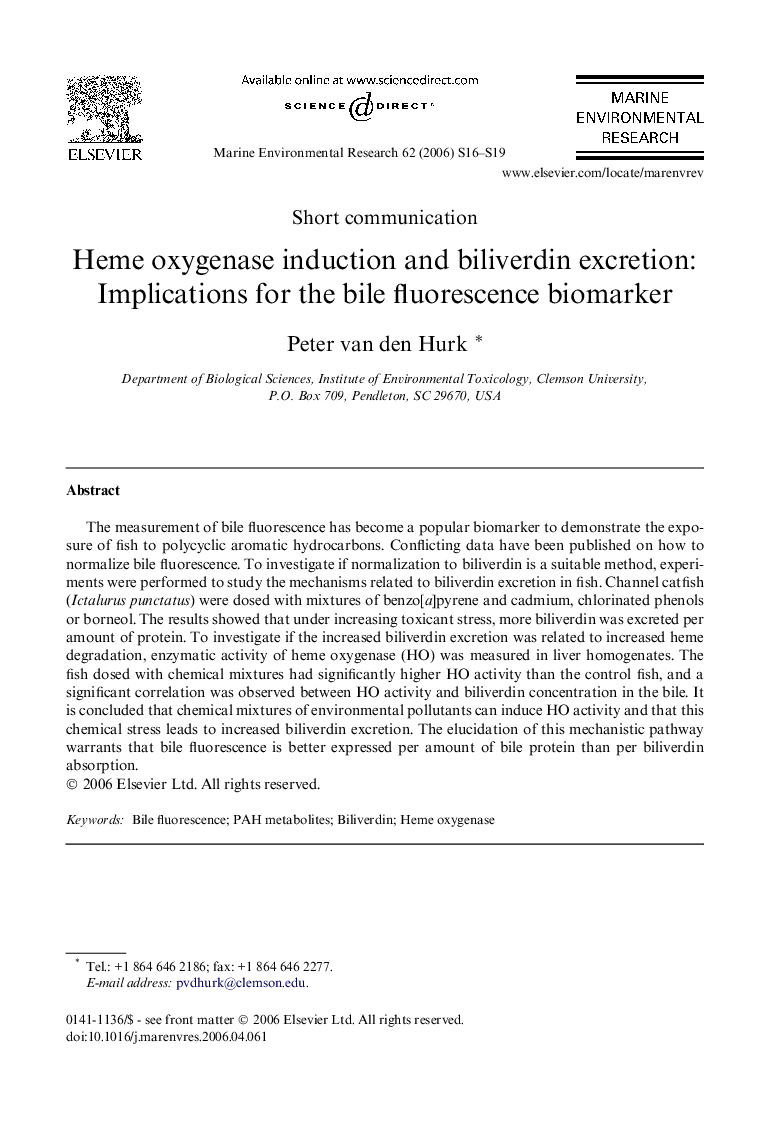| Article ID | Journal | Published Year | Pages | File Type |
|---|---|---|---|---|
| 4551722 | Marine Environmental Research | 2006 | 4 Pages |
The measurement of bile fluorescence has become a popular biomarker to demonstrate the exposure of fish to polycyclic aromatic hydrocarbons. Conflicting data have been published on how to normalize bile fluorescence. To investigate if normalization to biliverdin is a suitable method, experiments were performed to study the mechanisms related to biliverdin excretion in fish. Channel catfish (Ictalurus punctatus) were dosed with mixtures of benzo[a]pyrene and cadmium, chlorinated phenols or borneol. The results showed that under increasing toxicant stress, more biliverdin was excreted per amount of protein. To investigate if the increased biliverdin excretion was related to increased heme degradation, enzymatic activity of heme oxygenase (HO) was measured in liver homogenates. The fish dosed with chemical mixtures had significantly higher HO activity than the control fish, and a significant correlation was observed between HO activity and biliverdin concentration in the bile. It is concluded that chemical mixtures of environmental pollutants can induce HO activity and that this chemical stress leads to increased biliverdin excretion. The elucidation of this mechanistic pathway warrants that bile fluorescence is better expressed per amount of bile protein than per biliverdin absorption.
